If you’re new to the aquarium hobby, you might think that keeping fish is a tad – dare we say it – boring! After all, your pets spend their days swimming around the tank, eating and nibbling on algae, and not really doing much else, right?
However, that’s not the case with every fish species. So read this guide to discover ten fish species known for their playful behavior and interaction, adding a lively dynamic to the aquarium.
Key Takeaways
- Explore the unexpected playful side of pet fish, from Bettas performing tricks to Goldfish interacting with their owners.
- Aquarists can find joy in the unique behaviors and interactive qualities of various fish, including the ornate swimming of Neon Tetras and the symbiotic relationship between Clownfish and their anemones.
- Success in keeping these engaging creatures comes from attention to each species’ environment and nutritional needs, underscoring the rewarding nature of the fishkeeping hobby.
Summary Table
Here’s a handy table summarizing the key facts you’ll need to know if you want to take home any of our featured fish and add them to your aquarium!
Summary Table of Playful Fish Species
| Common Name | Scientific Name | Ideal Water Parameters | Origins | Diet | Size | Lifespan | Minimum Tank Size |
|---|---|---|---|---|---|---|---|
| Betta Fish | Betta splendens | 76-81°F, pH 6.5-7.5 | Thailand, Cambodia, Laos, Vietnam | Carnivorous (insect larvae, crustaceans) | Up to 3 inches | 3-5 years | 5 gallons |
| Dwarf Gourami | Trichogaster lalius | 72-82°F, pH 6.0-7.5 | South and Southeast Asia | Omnivorous | Up to 3 inches | 4-6 years | 10 gallons |
| Jack Dempsey | Rocio octofasciata | 72-86°F, pH 6.5-8.0 | Central America | Omnivorous | Up to 10 inches | 10-15 years | 55 gallons |
| Goldfish | Carassius auratus | 65-72°F, pH 7.0-7.5 | Eastern Asia | Omnivorous | 6-12 inches | 10-15 years | 20 gallons |
| Neon Tetra | Paracheirodon innesi | 70-81°F, pH 5.0-7.0 | South America | Omnivorous (prefers high-quality flakes) | Up to 1.5 inches | 5-8 years | 10 gallons |
| Clownfish | Amphiprioninae | 75-82°F, pH 7.8-8.4 | Warm waters of the Pacific and Indian Oceans | Omnivorous (small invertebrates, zooplankton) | 2-5 inches | 6-10 years | 20 gallons |
| Guppy | Poecilia reticulata | 75-82°F, pH 7.0-7.2 | Northeastern South America | Omnivorous | Up to 2.4 inches | 1-3 years | 5 gallons |
| Kuhli Loach | Pangio kuhlii | 73-86°F, pH 5.5-6.5 | Southeast Asia | Carnivorous (worms, crustaceans, insect larvae) | Up to 4 inches | 10 years | 20 gallons |
| Pleco | Hypostomus plecostomus | 74-80°F, pH 6.8-7.6 | South America | Herbivorous (algae, plant material) | Up to 24 inches | 10-15 years | 75 gallons |
| Corydoras Catfish | Corydoras paleatus | 72-78°F, pH 7.0-7.8 | South America | Omnivorous (bottom feeder) | Up to 2.5 inches | Up to 7 years | 10 gallons |
Betta Fish (Betta splendens)

Betta fish, also known as Siamese Fighting Fish, are popular freshwater aquarium fish best known for their vibrant colors and fancy, flowing finnage.
Bettas come from Asia, especially Thailand, Cambodia, Laos, and Vietnam, where they inhabit shallow, slow-moving waters like rice paddies, ponds, and marshes. These labyrinth fish are relatively hardy and adaptable, preferring a mainly carnivorous diet of insect larvae, insects, and small crustaceans. That said, they do enjoy nibbling on algae and small amounts of plant matter to supplement their diet.
Betta fish are not only beautiful but also have great personalities! They usually learn to recognize their owners and can be trained to do tricks like swimming through hoops and jumping out of the water to grab a morsel of food from your fingers.
If you’re planning on getting a betta fish for a pet, bear in mind these fish can be pretty aggressive, and you can never keep two males together in the same tank.
Dwarf Gourami (Trichogaster lalius)
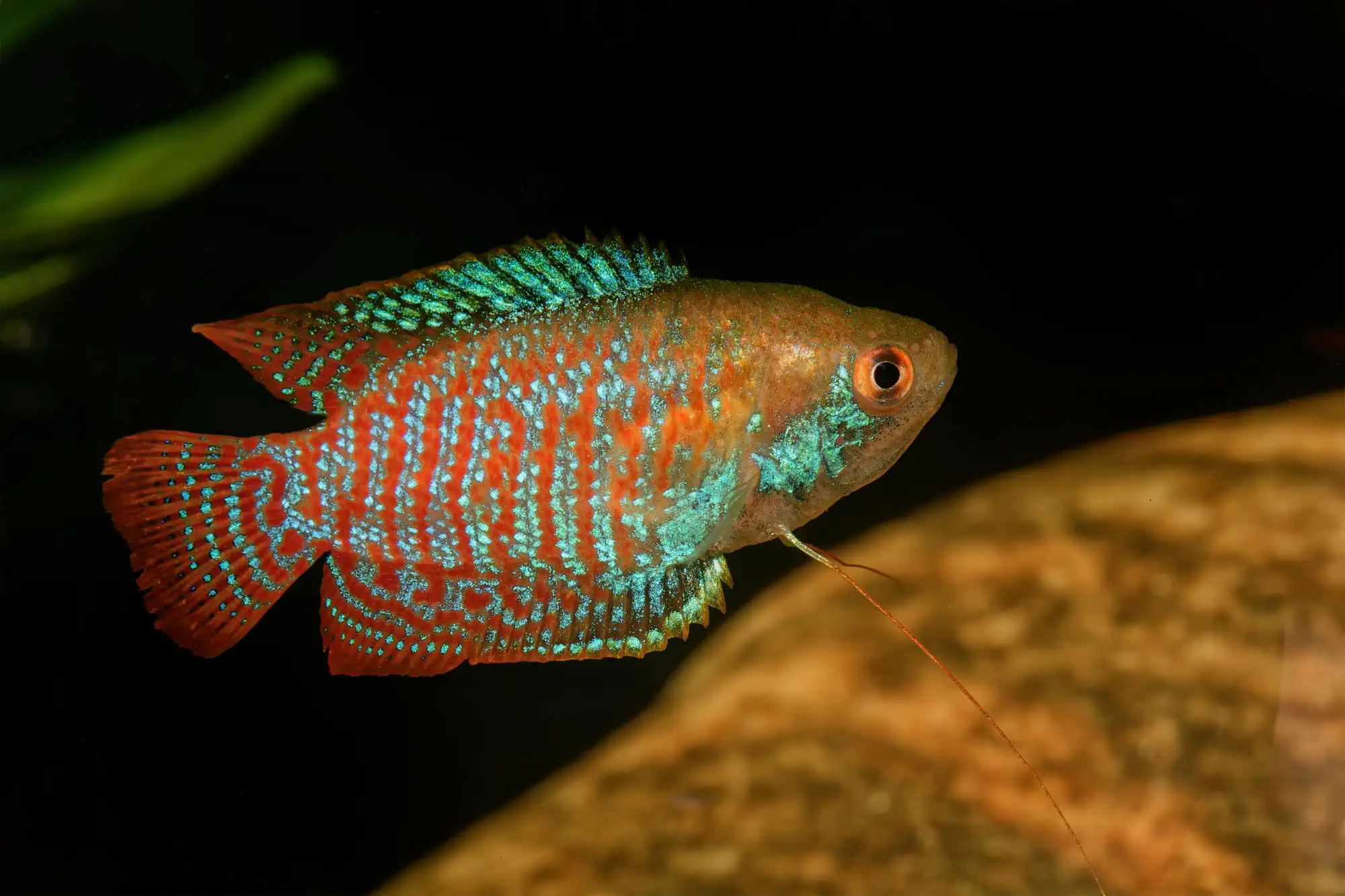
The beautiful Dwarf gourami is known for its curious behavior and interactive nature. The species’ vibrant colors and unique patterns make it a firm favorite with aquarists. These fish come in a range of colors, including red, blue, and green, and have a distinctive iridescent, metallic sheen that makes them stand out in any setup.
Dwarf gouramis are quite small, reaching only around 3 inches long at maturity, and are native to the slow-moving waters of South and Southeast Asia.
I love keeping Dwarf Gouramis as pets for their curious nature and interactive behavior. My gouramis seem to enjoy following me when I walk past their tank and dart to the water’s surface to grab a mouthful of air. These curious fish spend much of their day exploring their environment, playing with tank decorations and toys, such as a ping pong ball floating on the surface.
Jack Dempsey Cichlid (Rocio octofasciata)

Jack Dempsey cichlids are popular freshwater aquarium fish known for their playful behavior and unique appearance.
These South American natives are named after the famous boxer due to their aggressive and feisty nature. They can reach 10 inches long when fully grown, so large fish tanks are required to accommodate one of these guys.
Although not renowned for their ability to perform tricks, Jack Dempsey cichlids are still pretty interactive, curious, and playful. These fish have a love of rearranging the hardscape you worked hard to set up, moving rocks and decorations around to their liking. On the downside, Jack Dempseys can be aggressive towards other fish, although they can live with other larger, similarly belligerent species in a large enough tank.
Goldfish (Carassius auratus)

Goldfish are my favorite freshwater fish and have been for over 40 years!
They come in many different varieties, ranging in size from 6 to 8-inch fancy types to 12-inch long pond fish. You can keep most types of goldfish in a large tank, although most are happier living in a spacious garden pond with plenty of swimming space.
In addition to their amazing variety of colors, goldfish can be quite interactive. For example, my goldfish would beg for food whenever I passed their aquarium and would investigate my fingers when I was carrying out water changes and vacuuming the substrate. I even trained my Orandas to take food morsels from my fingers!
Neon Tetras (Paracheirodon innesi)

Fish like Neon Tetras are known for their schooling behavior, which can be fascinating to watch as they dart around the tank and interact with each other.
These brightly colored little fish can be quite skittish, and it’s entertaining to watch them flitting through clumps of dense plants and exploring their tank decorations. Neons are somewhat easier to care for than their slightly larger cousins, Cardinal tetras, and make just as impressive a display when kept in large groups of ten or more.
That said, these swimming gems need a well-maintained tank, stable water parameters, and a high-quality diet to thrive.
Clownfish
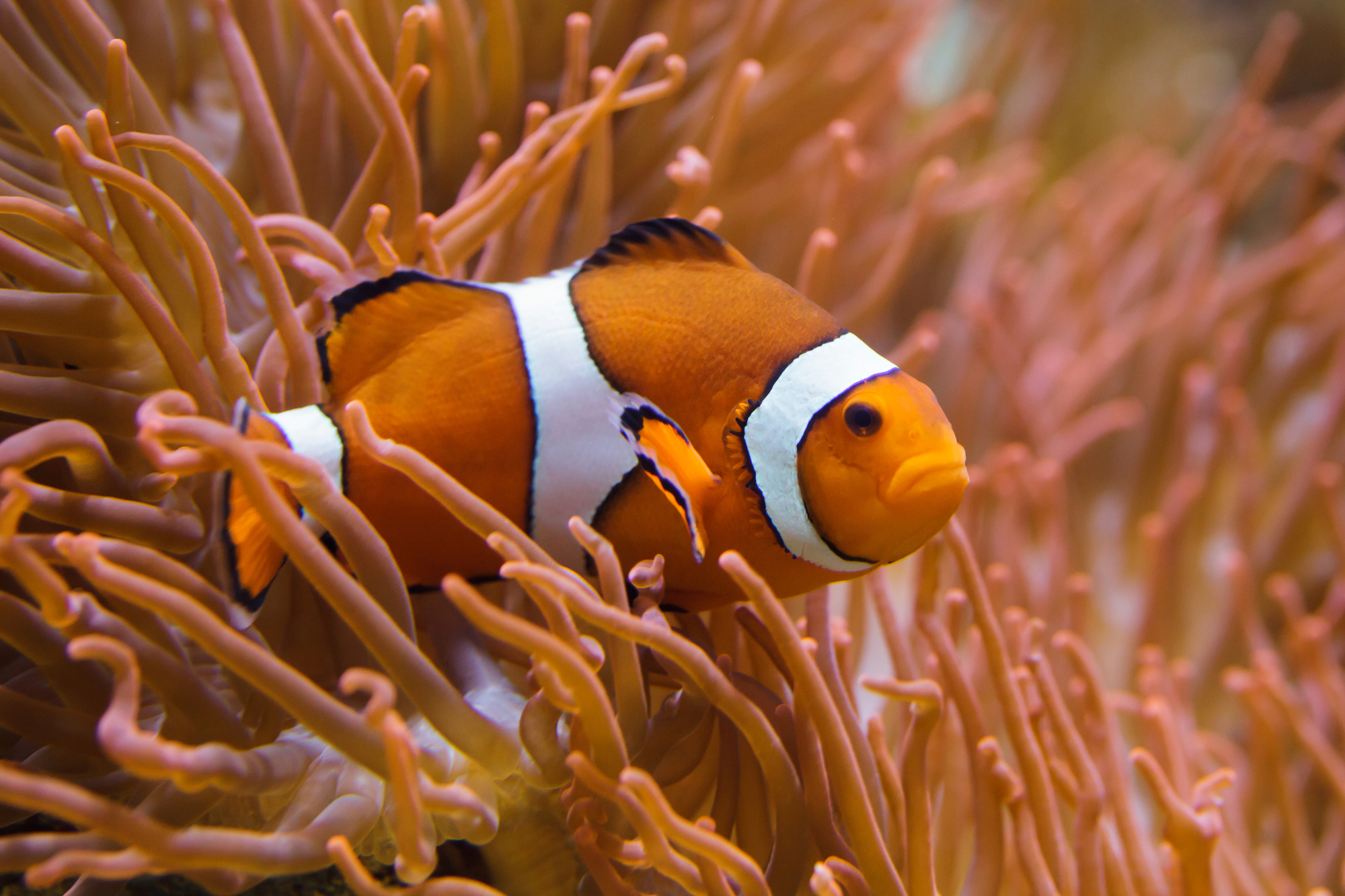
The movie Finding Nemo made Clownfish famous, although they were already an extremely popular go-to marine fish that graced many beginner’s saltwater tanks.
These beauties are well-known for their playful antics and interaction with their owners. They beg for food and come up to the viewing panes to see what you’re up to when you pass their aquarium.
Although Clownfish won’t talk to you like the piscine movie star, they will enjoy a symbiotic relationship with their anemone if you provide one. The interactive relationship between the Clownfish and the anemone is a fascinating one. The Clownfish is immune to the anemone’s stinging tentacles, using them as protection from would-be predators. The anemone enjoys devouring the Clownfish’s leftovers and also receives its protection from predators.
Guppies (Poecilia reticulata)
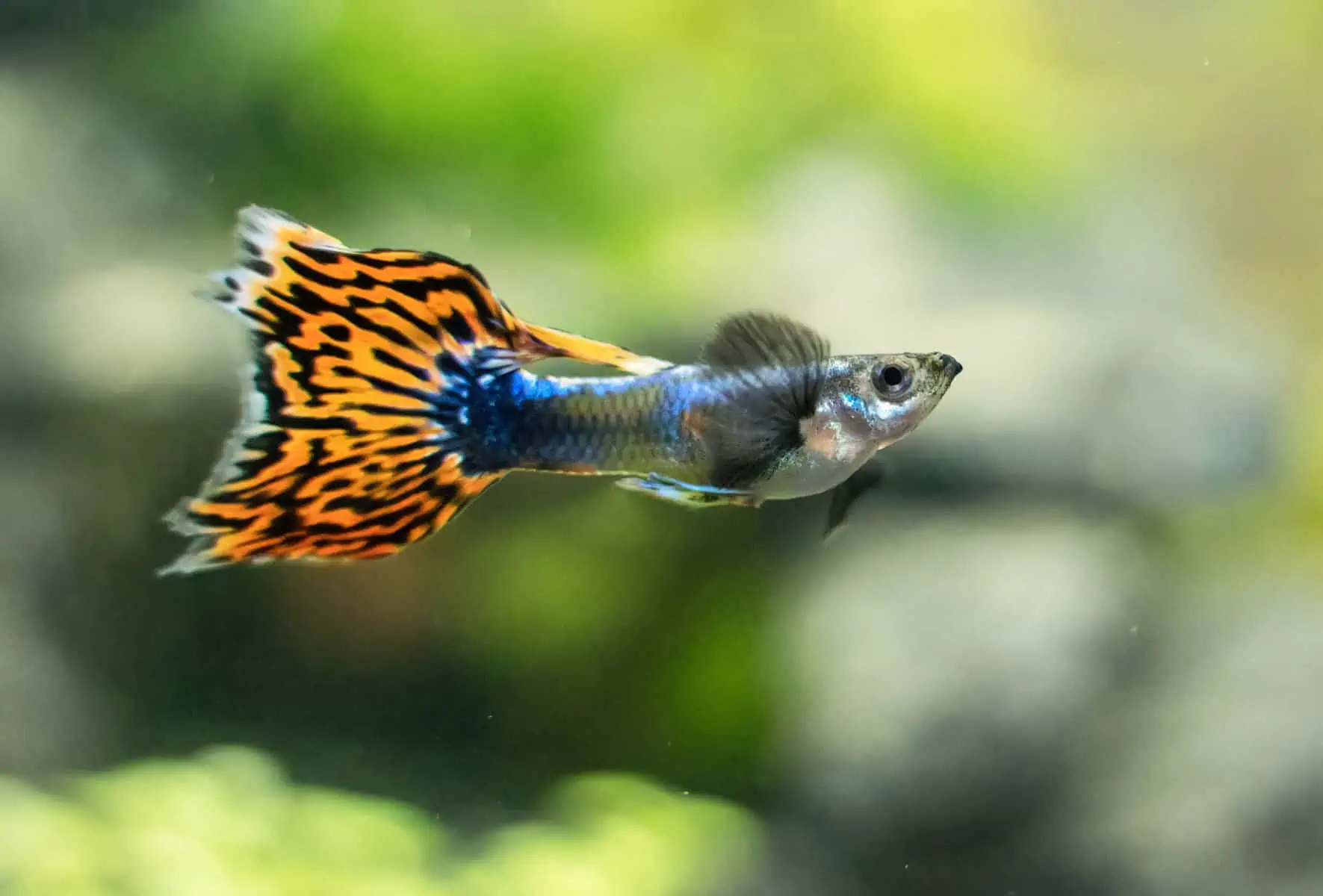
Guppies are lively and colorful fish who enjoy swimming around the tank and interacting with their tank mates. They also breed constantly, so you’ll never be short of replacements for any casualties if you keep this species!
I remember keeping a whole bunch of guppies in a large community tank one time. Those beautiful little fish kept me entertained for hours, their bright colors flashing through the lush plants in the aquarium was quite a site, as they chased each other, and looked for food scraps at feeding time.
Another highly entertaining habit my guppies had was hanging around in the filter outflow, using the current to carry them up to the water’s surface, and diving back down to start the ride over, time and again!
Kuhli Loaches (Pangio kuhlii)
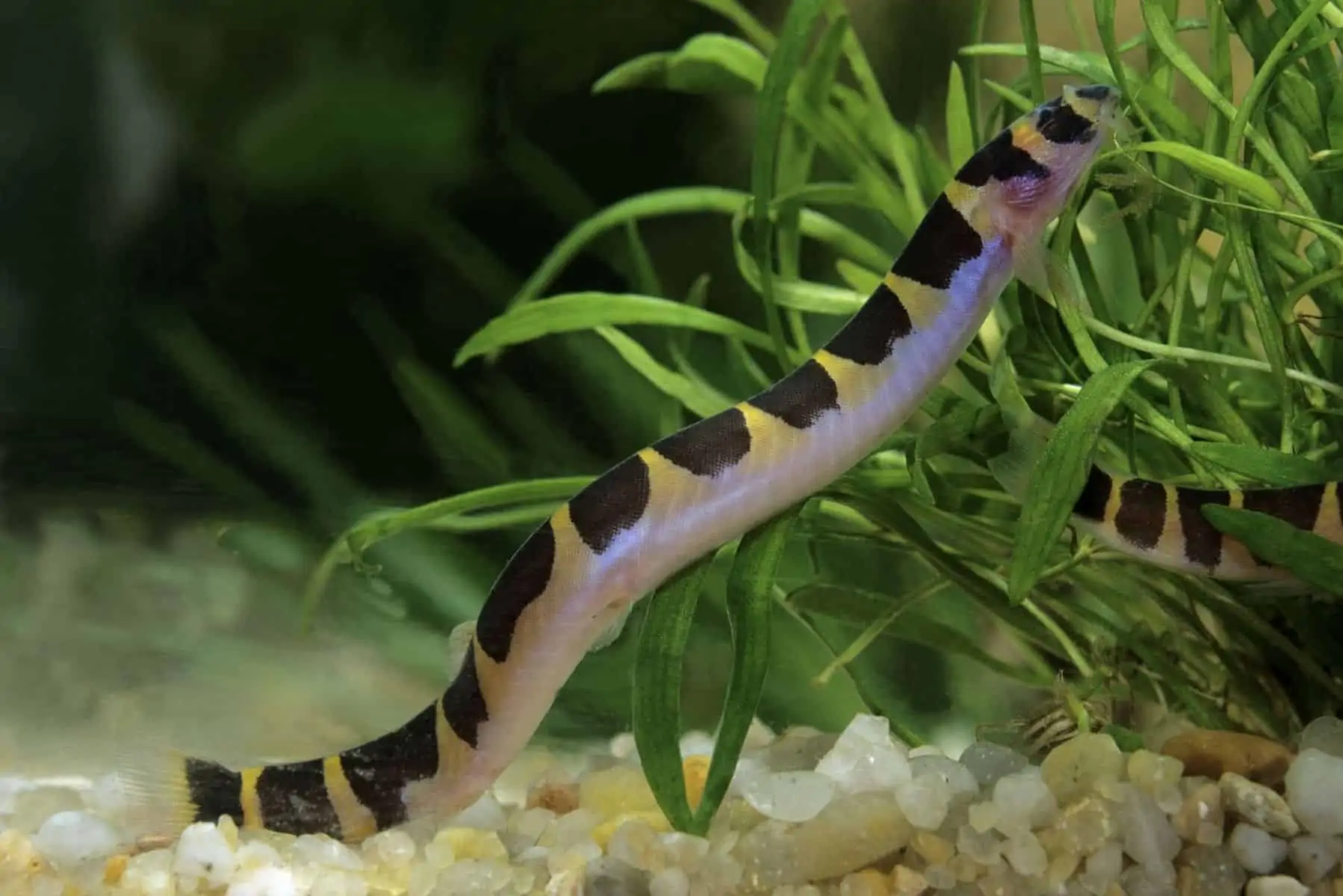
Kuhli Loaches are slender, eel-like fish that are known for their playful behavior, often darting in and out of hiding spots in the aquarium at lightning speed.
These rather cool, oddball fish are fascinating or freaky, depending on how you look at it! Although they don’t eat algae, these weird fish can still make excellent clean-up crew members, scavenging scraps of leftover food. That said, you need to feed them to prevent them from going hungry. The loaches enjoy sinking pellets, frozen bloodworms, and live blackworms.
If you have a moonlight setting on your aquarium lighting unit, try watching the Khuli loaches at night since they tend to be most active and less shy once the sun goes down. You can keep these fish in a planted tank, and they do well in a community tank with snails, shrimp, and other peaceful fish species.
Plecos (Hypostomus plecostomus)

Plecos, also known as plecostomus or sucker-mouth catfish, are a diverse group of freshwater fish belonging to the family Loricariidae. They are popular among aquarium enthusiasts for their distinctive appearance and algae-eating habits.
Several popular species are available, including the bizarre-looking Bristlenose pleco with its bristly snout, the Rubber Lip pleco, and the beautifully colored Gold Nugget pleco. Don’t make the mistake of taking home a juvenile Common pleco unless you have a very large tank since these fish can reach over a foot in length!
Plecos are known for their algae-eating behavior, which helps to keep aquariums clean. These fish are typically nocturnal, spending much of their day resting on surfaces or hiding in caves or crevices. So, if you want to watch them play and interact with their environment, you must be a night owl with a moonlight setting on your tank lighting system!
Corydoras Catfish (Corydoras paleatus)
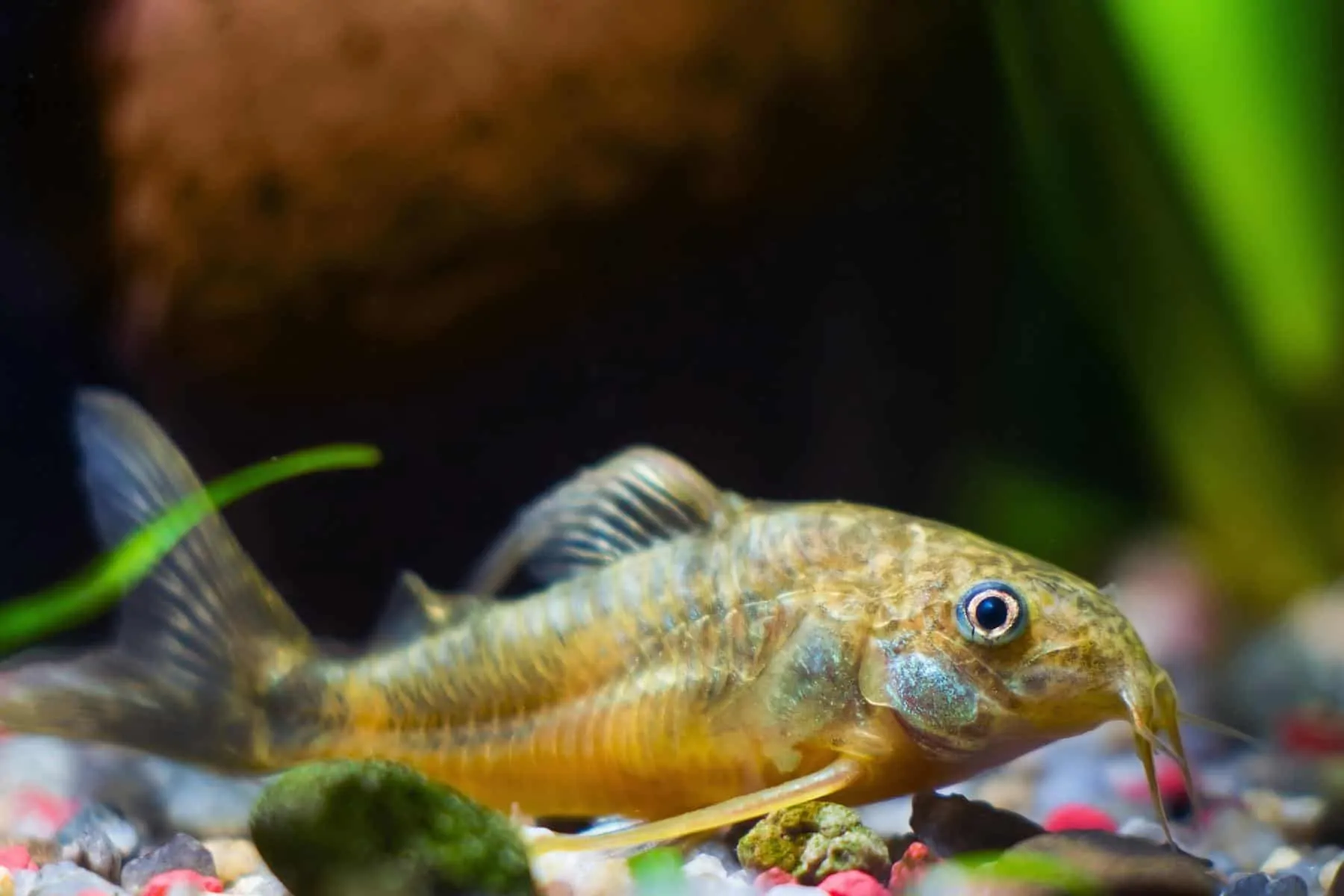
Corydoras catfish are another of my favorite aquarium fish species and have featured in all my tanks.
These cute little fish only grow to a couple of inches long and come in many different varieties, all of which are peaceful and work well in a community aquarium. Corys come from the coastal rivers in Brazil and Uraguay, especially the lower Paraná River basin, and have been favorites with hobbyists for many decades.
Corys do best when kept in small groups of at least five individuals, sitting on the substrate and resting for much of the day. Then, just when you were watching your other fish cruising gracefully around the tank, a cory flies abruptly up to the surface to snatch a gulp of air before plunging back to the substrate again.
As a bonus, these highly entertaining little fish are incredibly hardy and will provide you with up to seven years of fun.
Final Thoughts
If you thought keeping fish was a boring hobby, I hope this article has made you think again!
As you’ve learned, you can keep many highly entertaining, playful, interactive fish in a basic freshwater aquarium setup. Provided you give your chosen fish species a well-maintained environment and a high-quality diet, your aquatic pets should provide you with years of fascinating viewing.


